Related Research Articles

The House of Stuart, originally Stewart, was originally the royal house of Scotland, that later also ruled England, Ireland and in the end what came to be known as Great Britain, with historical connections to Brittany. The family name itself comes from the office of High Steward of Scotland, which had been held by the family scion Walter fitz Alan. The name "Stewart" and variations had become established as a family name by the time of his grandson, Walter Stewart. The first monarch of the Stewart line was Robert II whose descendants were kings and queens of Scotland from 1371 until the union with England in 1707. Mary, Queen of Scots was brought up in France where she adopted the French spelling of the name, Stuart.

Duke of Hamilton is a title in the Peerage of Scotland, created in 1643. It is the senior dukedom in that Peerage, and as such its holder is the Premier Peer of Scotland, as well as being head of both the House of Hamilton and the House of Douglas. The title, the town of Hamilton in Lanarkshire, and many places around the world are named after members of the Hamilton family. The ducal family's surname, originally "Hamilton", is now "Douglas-Hamilton". Since 1711, the Dukedom has been held together with the Dukedom of Brandon in the Peerage of Great Britain, and the Dukes since that time have been styled Duke of Hamilton and Brandon, along with several other subsidiary titles.

Duke of Atholl, alternatively Duke of Athole, named after Atholl in Scotland, is a title in the Peerage of Scotland held by the head of Clan Murray. It was created by Queen Anne in 1703 for John Murray, 2nd Marquess of Atholl, with a special remainder to the heir male of his father, the 1st Marquess.
William Sinclair (1410–1484), 1st Earl of Caithness (1455–1476), last Earl (Jarl) of Orkney, Baron of Roslin, was a Norwegian and Scottish nobleman and the builder of Rosslyn Chapel, in Midlothian.

The Mormaer or Earl of Buchan was originally the provincial ruler of the medieval province of Buchan. Buchan was the first Mormaerdom in the High Medieval Kingdom of the Scots to pass into the hands of a non-Scottish family in the male line. The earldom had three lines in its history, not counting passings from female heirs to sons. Today it is held by the Erskine family as a peerage. The current holder is Malcolm Erskine, 17th Earl of Buchan.

Earl of Carrick or Mormaer of Carrick is the title applied to the ruler of Carrick, subsequently part of the Peerage of Scotland. The position came to be strongly associated with the Scottish crown when Robert the Bruce, who had inherited it from his maternal kin, became King of the Scots in the early 14th century. Since the 15th century the title of Earl of Carrick has automatically been held by the heir apparent to the throne, meaning Prince Charles is the current Earl.

The Mormaer or Earl of Atholl was the title of the holder of a medieval comital lordship straddling the highland province of Atholl, now in northern Perthshire. Atholl is a special Mormaerdom, because a King of Atholl is reported from the Pictish period. The only other two Pictish kingdoms to be known from contemporary sources are Fortriu and Circinn. Indeed, the early 13th century document known to modern scholars as the de Situ Albanie repeats the claim that Atholl was an ancient Pictish kingdom. In the 11th century, the famous Crínán of Dunkeld may have performed the role of Mormaer.
Gillespie Archibald Campbell, 2nd Earl of Argyll was a Scottish nobleman and politician who was killed at the Battle of Flodden.
John Stewart, 1st Earl of Atholl, also known as Sir John Stewart of Balveny, was a Scottish nobleman and ambassador.
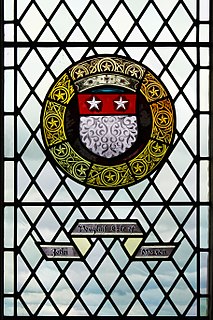
James Douglas, the 4th Lord of Dalkeith, was created the 1st Earl of Morton in 1458.

Lord Ochiltree of Lord Stuart of Ochiltree was a title in the Peerage of Scotland. In 1542 Andrew Stewart, 2nd Lord Avondale exchanged the lordship of Avondale with Sir James Hamilton for the lordship of Ochiltrie and by Act of Parliament was ordained to be styled Lord Stuart of Ochiltrie. His great-grandson, the third Lord Stuart of Ochiltrie, resigned the feudal barony of Ochiltree and the peerage to his cousin, James Stewart, with the consent of the Crown in 1615. In 1619 he was instead elevated to the Peerage of Ireland as Baron Castle Stewart; see the Earl Castle Stewart for further history of this branch of the family).
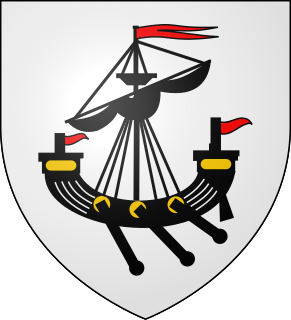
For the Child ballad, see The Lord of Lorn and the False Steward.
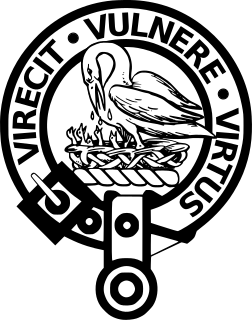
Clan Stewart is a Highland Scottish clan. The clan is recognised by Court of the Lord Lyon; however, it does not have a Clan Chief recognised by the Lord Lyon King of Arms. Because the clan has no chief it can be considered an armigerous clan; however, the Earls of Galloway are now considered to be the principal branch of this clan, and the crest and motto of The Earls of Galloway's arms are used in the Clan Stewart crest badge. The Court of the Lord Lyon recognises two other Stewart/Stuart clans, Clan Stuart of Bute and Clan Stewart of Appin. Clan Stuart of Bute is the only one of the three clans at present which has a recognised chief.
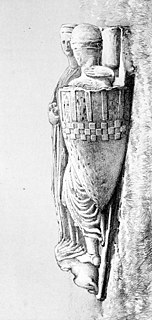
Walter Bailloch, also known as Walter Bailloch Stewart, was distinguished by the sobriquet Bailloch or Balloch, a Gaelic nickname roughly translated as "the freckled". He was the Earl of Menteith jure uxoris.
James Stewart, the Black Knight of Lorne (c.1399–c.1451) was a Scottish nobleman.
Alexander Gordon, 3rd Earl of Huntly was a Scottish nobleman. He was a member of Parliament, a member of the Privy Council, a regent and Lieutenant of the kingdom.
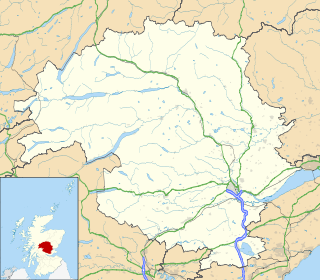
Invermay is a diffuse settlement in Perth and Kinross, Scotland. It is situated approximately 2 km southeast of Forteviot on the Water of May, some 8 km southwest of Perth.
John Stewart, 5th Earl of Atholl, (1563–1595) was a Scottish landowner.
John Stewart, 1st Earl of Atholl (1566-1603) was a Scottish landowner.
James Stewart, 5th Lord Innermeath was a Scottish courtier and landowner.
References
- ↑ David Masson, Register of the Privy Council of Scotland: 1578-1585, vol. 3 (Edinburgh, 1880), p. 491.